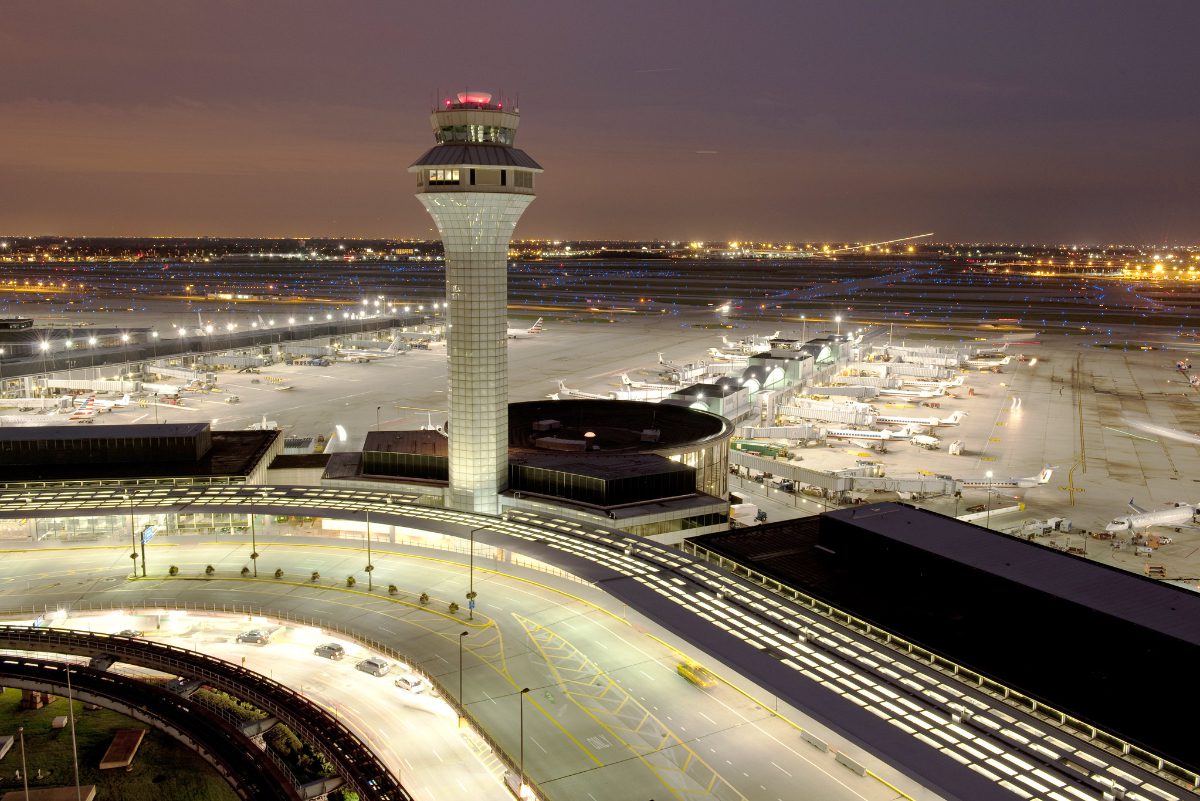Skift Take
At issue is potential interference from high-speed wireless service, known as 5G, with the equipment that airplanes use for take-offs and landings. Both telecoms and airlines seek a compromise on where telecoms will deploy 5G.
The Federal Aviation Administration (FAA) on Friday disclosed a list of 50 U.S. airports that will have buffer zones when wireless carriers turn on new 5G C-band service on Jan. 19.
AT&T and Verizon Communications on Monday agreed to buffer zones around 50 airports to reduce the risk of disruption from potential interference to sensitive airplane instruments like altimeters. They also agreed to delay deployment for two weeks, averting an aviation safety standoff.
The list includes airports in New York City, Los Angeles, Chicago, Las Vegas, Minneapolis, Detroit, Dallas, Philadelphia, Seattle and Miami.
The FAA said it does not “not necessarily” mean that low-visibility flights cannot occur at airports that are not among the 50.
AT&T and Verizon, which won nearly all of the C-Band spectrum in an $80-billion auction last year, declined comment.
On Thursday, the FAA renewed warnings that despite the agreement 5G wireless service could still disrupt flights, saying “even with the temporary buffer around 50 airports, 5G deployment will increase the risk of disruption during low visibility” including “flight cancellations, diverted flights, and delays during periods of low visibility.”
Some major airports such as Denver, Atlanta and Ronald Reagan Washington National are not on the list because 5G is not yet being deployed, while others are not on the list because “5G towers are far enough away that a natural buffer exists.”
Other airports not listed do not currently have the ability to allow low-visibility landings, the FAA said. It said the delay would allow it to evaluate ways to minimize disruptions, and also gives companies more time to prepare.
“If there’s the possibility of a risk to the flying public, we are obligated to pause the activity, until we can prove it is safe,” the FAA said.
ACI-NA President and CEO Kevin Burke, who heads the association representing U.S. and Canadian airports, said on Friday the FAA list “is largely irrelevant because the entire aviation system is about to be adversely impacted by this poorly planned and coordinated expansion of 5G service in and around airports.”
He said the “so-called fix will create winners and losers within the airport community, and the entire aviation system will suffer under the terms of this deal.”
Airlines for America, a trade group representing U.S. passenger and cargo carriers, said it appreciated the “FAA’s efforts to implement mitigations for airports that may be most impacted by disruptions generated by the deployment of new 5G service.”
(Reporting by David Shepardson Editing by Sandra Maler and Grant McCool)
This article was written by David Shepardson from Reuters and was legally licensed through the Industry Dive publisher network. Please direct all licensing questions to [email protected].

The Daily Newsletter
Our daily coverage of the global travel industry. Written by editors and analysts from across Skift’s brands.
Have a confidential tip for Skift? Get in touch
Tags: 5G wireless, faa, u.s. airports
Photo credit: Chicago O'Hare International Airport seen at night in 2014. O'Hare is one of the airports that will get a 5G buffer. O'Hare International Airport / Flickr / Creative Commons
